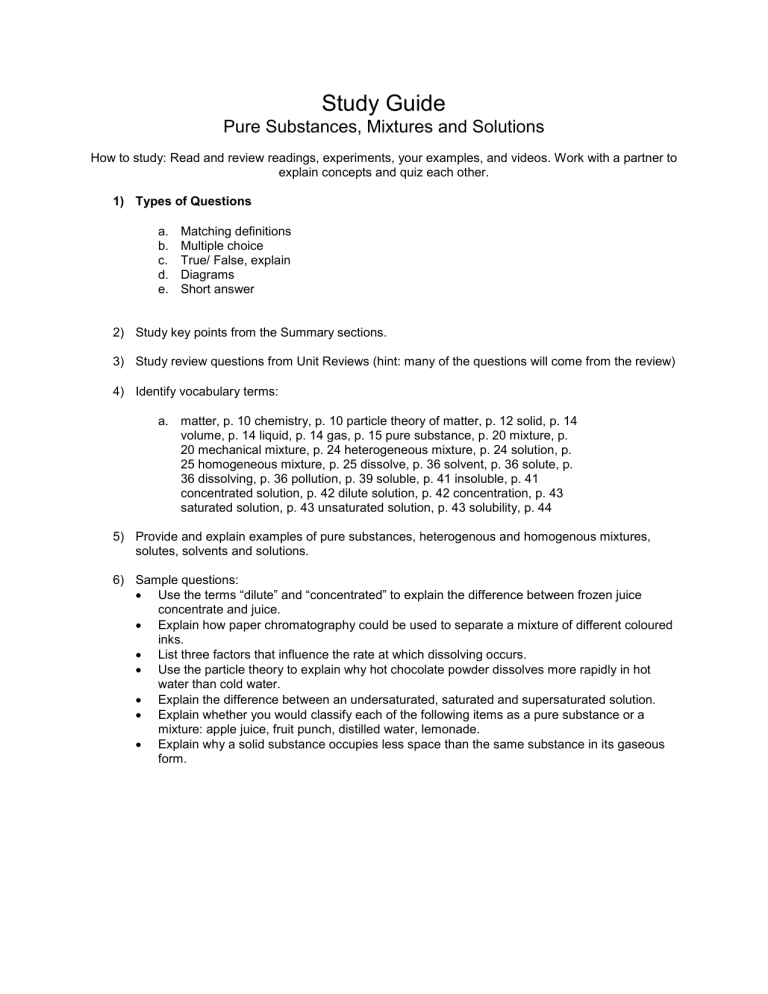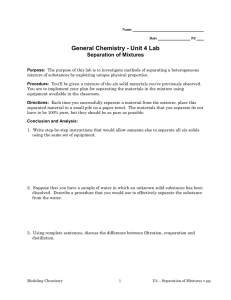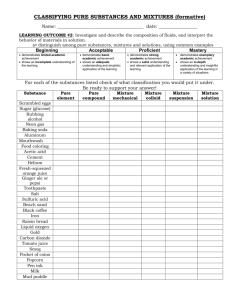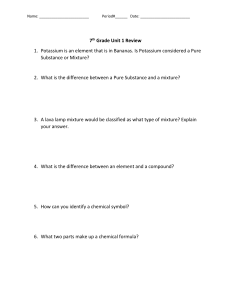Study Guide Help - Pure Substances, Mixtures and Solutions
advertisement

Study Guide Pure Substances, Mixtures and Solutions How to study: Read and review readings, experiments, your examples, and videos. Work with a partner to explain concepts and quiz each other. 1) Types of Questions a. b. c. d. e. Matching definitions Multiple choice True/ False, explain Diagrams Short answer 2) Study key points from the Summary sections. 3) Study review questions from Unit Reviews (hint: many of the questions will come from the review) 4) Identify vocabulary terms: a. matter, p. 10 chemistry, p. 10 particle theory of matter, p. 12 solid, p. 14 volume, p. 14 liquid, p. 14 gas, p. 15 pure substance, p. 20 mixture, p. 20 mechanical mixture, p. 24 heterogeneous mixture, p. 24 solution, p. 25 homogeneous mixture, p. 25 dissolve, p. 36 solvent, p. 36 solute, p. 36 dissolving, p. 36 pollution, p. 39 soluble, p. 41 insoluble, p. 41 concentrated solution, p. 42 dilute solution, p. 42 concentration, p. 43 saturated solution, p. 43 unsaturated solution, p. 43 solubility, p. 44 5) Provide and explain examples of pure substances, heterogenous and homogenous mixtures, solutes, solvents and solutions. 6) Sample questions: Use the terms “dilute” and “concentrated” to explain the difference between frozen juice concentrate and juice. Explain how paper chromatography could be used to separate a mixture of different coloured inks. List three factors that influence the rate at which dissolving occurs. Use the particle theory to explain why hot chocolate powder dissolves more rapidly in hot water than cold water. Explain the difference between an undersaturated, saturated and supersaturated solution. Explain whether you would classify each of the following items as a pure substance or a mixture: apple juice, fruit punch, distilled water, lemonade. Explain why a solid substance occupies less space than the same substance in its gaseous form.






